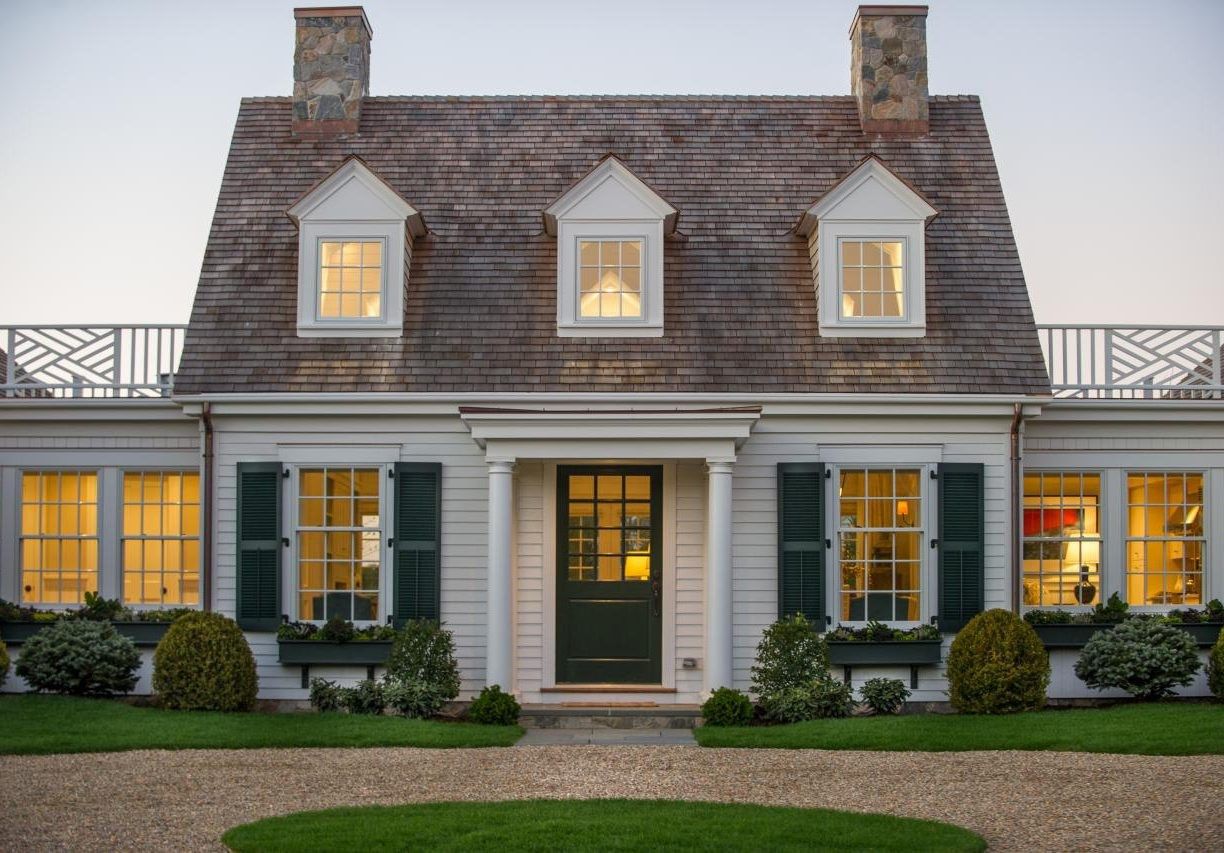Picture a cozy cottage nestled amidst rolling hills, its white picket fence and charming gables beckoning you in. That’s the captivating allure of a small Cape Cod house. Known for its classic style and efficient design, these homes exude a timeless charm that has enchanted generations. But are they the right fit for your lifestyle and budget? Let’s explore the world of small Cape Cod house plans, uncovering their design secrets, advantages, and potential drawbacks to help you make an informed decision.
Unveiling the Charm: What Defines a Small Cape Cod?
Imagine a home less than 1,500 square feet, with a roof that slopes steeply like a mountain peak, and a design rooted in clean lines and symmetry. That’s the essence of a small Cape Cod. While “small” might bring to mind images of cramped quarters, today’s designs often incorporate open floor plans and modern amenities for comfortable living.
Why Choose a Small Cape Cod?
- Budget-Friendly: Building a smaller home is often easier on the wallet than a larger one, and the energy efficiency of a compact design translates to lower utility bills.
- Energy Efficiency: Their size naturally reduces energy consumption for heating and cooling, benefiting both the environment and your finances.
- Timeless Appeal: The classic Cape Cod design evokes a sense of warmth and nostalgia, inviting you to unwind and create lasting memories.
- Flexible Layout: Cape Cods are known for their adaptability, with layouts that can be modified to accommodate your changing needs.
Exploring Different Styles:
- Classic Cape Cod: This iconic style features a centered front door flanked by windows on each side and crowned with the signature steep roof.
- Half Cape: Similar to the classic but with a single window beside the front door, offering a slightly smaller footprint.
- Three-Quarter Cape: This variation boasts an extended roofline and a side gable, creating additional space for bedrooms or living areas.
- Modern Cape Cod: Characterized by open layouts, abundant natural light from large windows, and a sleek, minimalist aesthetic.
- Farmhouse Cape Cod: This style blends traditional Cape Cod features with rustic elements like board-and-batten siding, exposed beams, and charming metal accents.
Building Your Dream: Tips for Success
- Personalization Is Key: Whether you envision a garage, a finished basement, or energy-efficient features, customize your Cape Cod to match your lifestyle.
- Find the Right Builder: Seek out reputable builders with experience in small Cape Cod homes, ensuring they understand this architectural style’s nuances.
- Budget Wisely: Costs can fluctuate based on location, materials, and customizations. Plan for a range of expenses to stay on track.
Important Considerations:
- Sustainability: Minimize your environmental impact by opting for eco-friendly materials and energy-efficient features.
- Regional Variations: Cape Cod styles have evolved across the country. Research regional interpretations for inspiration.
- Interior Design: Optimize your space with design ideas tailored for small Cape Cods, incorporating clever storage solutions and maximizing functionality without compromising style.
How Much Does it Cost to Build a Small Cape Cod House?
Dreaming of a charming Cape Cod but want to keep it budget-friendly? Enter “small” Cape Cod house plans, perfect for first-time homeowners, those seeking a cozier living space, or individuals embarking on a new chapter. These designs typically fall under 1,500 square feet, delivering classic Cape Cod character in a more compact package.
While the average cost to build a small Cape Cod house starts around $148,000, remember that this figure can fluctuate. The final price tag is influenced by several factors:
- Materials: Choosing different types of wood, roofing materials, siding, and interior finishes can significantly impact your budget.
- Labor: Local labor costs, contractor fees, and specialized trades like electricians and plumbers contribute to overall expenses.
- Custom Features: Adding features like a fireplace, upgraded appliances, or a dormer will increase the overall cost.
- Location: Land prices and building regulations vary greatly by region, impacting the final price.
Why Choose a Cape Cod House Plan?
- Affordability: Smaller footprints naturally translate to lower building costs, making them an attractive option for budget-conscious individuals.
- Timeless Charm: Cape Cod houses boast a classic, enduring appeal with their steep roofs, dormer windows, and symmetrical facades.
- Expansion Potential: Unfinished attic spaces offer the flexibility to expand your living space in the future without major renovations.
- Aging in Place: Cape Cods can be designed with main-floor bedrooms, making them suitable for long-term living and accessibility.
Modern Makeovers for a Classic Style:
- Open Floor Plans: Create a more spacious and contemporary feel by opening up the flow between rooms.
- Natural Light: Incorporate large windows to brighten your home, maximize natural light, and enjoy views of the outdoors.
- Material Choices: While traditional shingles are common, exploring stucco, sleek brick, or natural stone for the exterior can add a modern touch.
Are Cape Cod Homes Inherently Small?
While often associated with cozy living, the notion that all Cape Cod homes are inherently small is a misconception. While it’s true that classic Cape Cod houses built in the past often ranged from 1,000 to 2,000 square feet, modern interpretations have expanded the definition of this charming style.
Today, you’ll find Cape Cod homes in a variety of sizes. Some homeowners embrace the traditional, cozier feel of a smaller layout, while others opt for finished basements, added dormers for additional living space, or even full additions to expand the original footprint.
Regardless of size, the enduring popularity of Cape Cod homes stems from their clever use of space and their timeless aesthetic.
What are the Disadvantages of a Cape Cod House?
While undeniably charming, Cape Cod homes do come with their share of potential drawbacks. Here are some factors to consider:
Outdated Functionality:
- Small Kitchens and Bathrooms: Older Cape Cods often have cramped kitchens and bathrooms that may not meet modern needs without significant renovations.
- Limited Room Sizes: The typically compact rooms can limit furniture arrangement and overall functionality.
Heating and Cooling Challenges:
- Second Floor Heat Trap: The sloped roof design can lead to uncomfortable heat buildup in upstairs rooms during warmer months.
- Uneven Temperature Distribution: Original designs with limited insulation can result in uneven temperatures throughout the home.
Limited Natural Light:
Small windows, especially in upper-level rooms, can restrict natural light, impacting the home’s brightness and potentially increasing energy consumption.
Storage Constraints:
Older Cape Cods often lack built-in storage solutions, posing challenges for organization and clutter management.
Additional Considerations:
- Renovation Costs: Be prepared for potentially high renovation costs to update an older Cape Cod to meet modern standards.
- Accessibility Issues: Steep staircases and narrow doorways may present challenges for individuals with mobility issues or those planning to age in place.
- Resale Value: While charming, some of these drawbacks might impact a Cape Cod’s resale value compared to other styles.
Ultimately, carefully weighing the pros and cons of a Cape Cod home will help you determine if this charming style aligns with your needs and lifestyle.
To calculate the square root of 85, you can use a calculator or visit this page. If you are looking for a vessel to wash your hands, a small tub will suffice.
- Double Island Kitchen Ideas: Design Your Dream Cooking Space - October 16, 2025
- Huge Kitchen Island: Design Ideas for an Expansive Space - October 15, 2025
- Big Island Kitchen Design Ideas for Functional, Stylish Spaces - October 14, 2025










